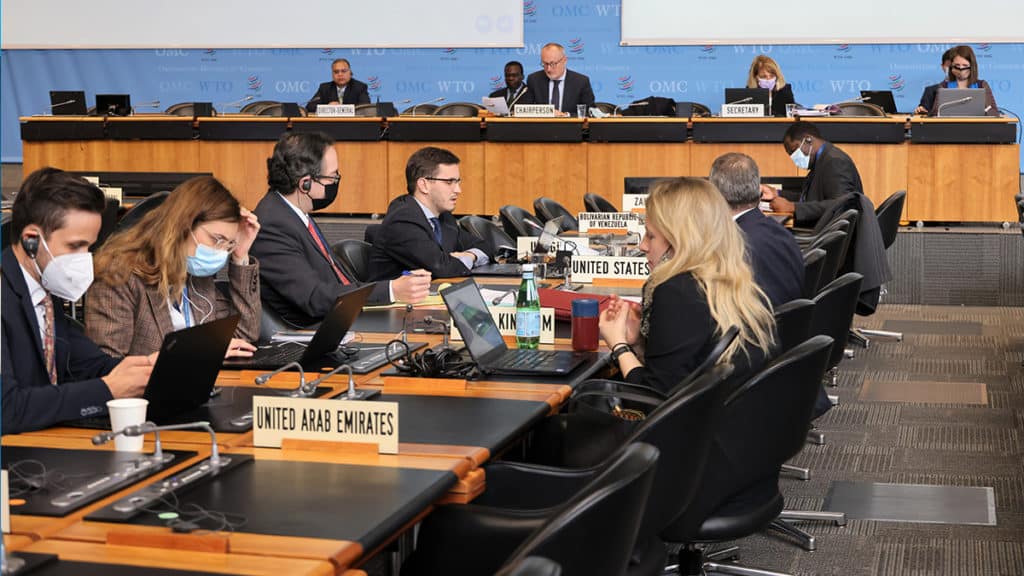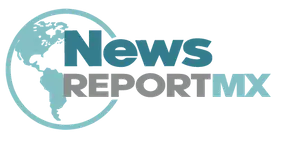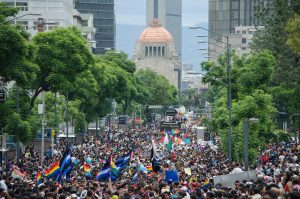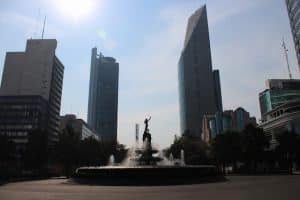El Consejo General aprueba la decisión final sobre el Mecanismo aplicable en caso de subutilización de los contingentes arancelarios previsto en la Decisión de Bali

El 31 de marzo, los Miembros de la OMC llegaron a un acuerdo importante que ayudará a abordar la constante “subutilización” de los contingentes arancelarios aplicados a las importaciones de productos agropecuarios. La decisión del Consejo General pone fin a los largos debates sobre asuntos pendientes relacionados con el Entendimiento de 2013 relativo a las disposiciones sobre la administración de los contingentes arancelarios, también conocido como la Decisión de Bali sobre los contingentes arancelarios, que se adoptó en la Novena Conferencia Ministerial de la OMC, celebrada en Bali (Indonesia).
(de momento sólo en inglés)
The chair of the General Council, Ambassador Didier Chambovey of Switzerland, welcomed the achievement: “I would like to congratulate all members for their pragmatism and constructive spirit, which facilitated arriving at the solution. This is the spirit that will characterize our work, and I’m grateful to all for this positive action.”
The chair of the Committee on Agriculture, Mr Marcos Da Rosa Uranga (Uruguay), also hailed the far-reaching impact of the hard-won success after all WTO members reached consensus on a deal at the Committee on Agriculture meeting on 29 March. This agreement “not only contributes to the fulfilment of a longstanding ministerial mandate in paragraphs 13-15 of the Bali TRQ Decision but also instils confidence in the capacity of members to collectively agree on decisions by consensus,” he said.
Tariff rate quotas (TRQs) allow imports of certain agricultural goods to be imported at lower duties up to a specified amount, with increased duties applied to amounts over the limit. The mechanism was agreed as a means of allowing exporters some access to other countries’ markets when the normal tariffs on imports are high. The 2013 Understanding seeks to address cases where importing members’ quotas are persistently underfilled.
In view of high agricultural tariffs, TRQs remain an important medium to access agricultural markets, with more than 1200 TRQs forming part of market access commitments in the WTO schedules of 41 members.
However, members’ average fill rate of all WTO TRQs during 2014-2019 stood at 53%. Based on the Secretariat study of September 2020, close to 200 TRQs, with fill rate below 65%, could have theoretically been subject to the Bali TRQ Decision underfill mechanism in the year 2018.
Matters related to TRQ administration and underfill have been routinely forming an important part of the Committee’s Q&A-based discussions. By strengthening the TRQ underfill mechanism, this agreement provides members with an additional tool to deal with specific concerns related to governmental administration mechanisms diluting market access under TRQ commitments.
The “unfinished business” addressed by the General Council decision concerned future operation of paragraph 4 of the Bali TRQ Decision on the underfill mechanism, setting out importing members’ obligations in the “final” stage of the mechanism for ensuring prompt and unencumbered access for exporting members to underfilled quotas.
WTO members were able to reach an agreement on several elements on transparency and notification practices to improve the utilization of tariff quotas during a 2017-19 review of the implementation of the Bali TRQ decision. However, they could not agree on how the final stage of the underfill mechanism should work.
Members achieved a breakthrough at a reconvened 100th meeting of the Committee on Agriculture on 29 March, removing all remaining obstacles to a deal on the underfill mechanism. The draft deal was transmitted to the General Council (G/AG/32/Add.1) for its consideration and approval.
In his report to the General Council, Mr Da Rosa praised members’ dedication, constructive engagement and flexibility, which led to consensus being achieved. The discussions intensified over the past year, with a view to achieving consensus by the agreed deadline. In keeping with the recommendations of the review approved by the General Council in 2019, the deadline to reach an agreement was originally set for the end of 2021. This was further extended to 31 March 2022 to give members more time to consult with their capitals.
The underfill mechanism deals with cases when the fill rate of a TRQ in any given year is below 65% for two consecutive years or the fill rate is not notified by the importing member. In the absence of an improvement in the fill rate or a satisfactory resolution to the problem, the importing WTO member may be required to change the management of its TRQs in order to demonstrate that market circumstances rather than quota administration are contributing to the underfill.
Paragraph 4 of the mechanism concerns the initiation of the “final stage” to deal with chronic underfill (fill rate below 65% for three consecutive years, little increase in fill rates during that period). The key outstanding issue on paragraph 4 was how to arrive at “closure” on underfill for a developing importing member which does not achieve the required increase in the fill rate in the final stage of the mechanism.
Costa Rica’s proposal in 2021 (G/AG/32), which forms part of the final deal, stated that an importing developing member not meeting the required increase in fill-rate after two years will be subject to the standard requirement set out in the first sentence of paragraph 4(1), if so requested by interested exporting members. In the absence of such a request, the concern should be marked as closed.
At the Agriculture Committee meeting on 29 March, the proposal gained universal support from all WTO members. Many delegations underlined that it provided a pragmatic and balanced solution to improve the TRQ fill rate while allowing adequate space for special and differential treatment for developing countries.














